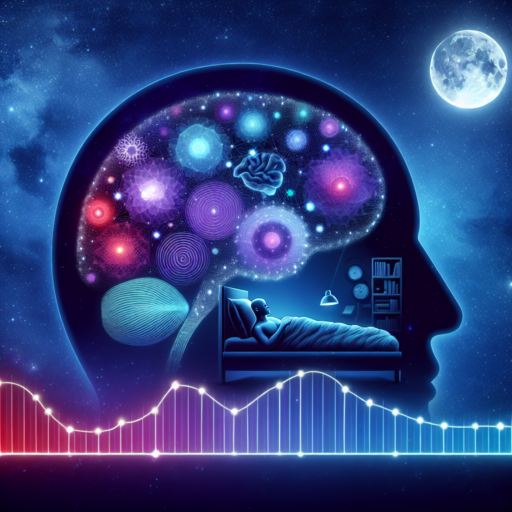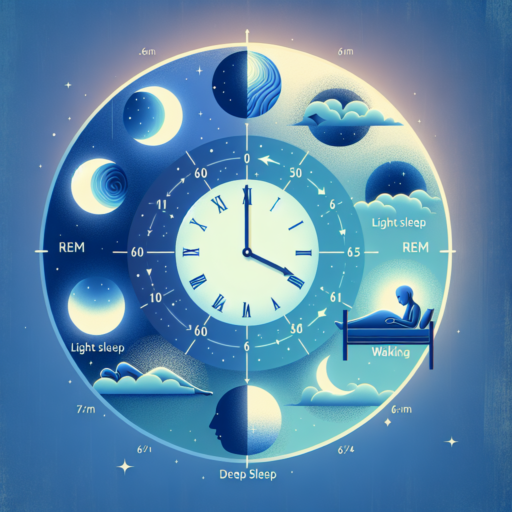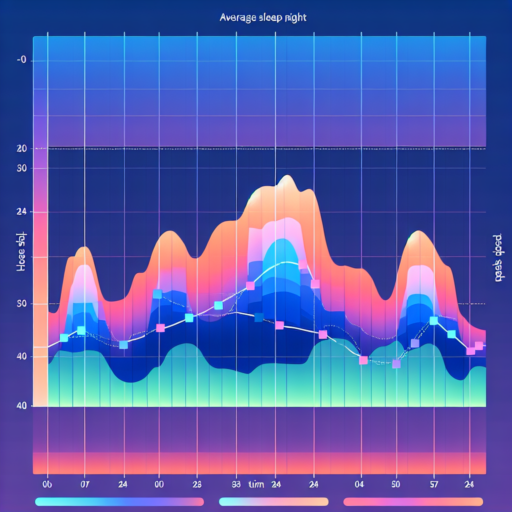Is REM sleep deep sleep?
When discussing sleep stages, the question of «Is REM sleep deep sleep?» often surfaces, sparking conversations around the complexity of our sleep cycles. REM sleep, or Rapid Eye Movement sleep, and deep sleep serve distinct functions in our recuperative processes, each playing a crucial role in our overall health and well-being.
REM sleep, known for its characteristic rapid movements of the eyes, is a unique phase of the sleep cycle. Unlike deep sleep, which is the stage of profound rest and the hardest from which to wake up, REM sleep is associated with vivid dreams and is considered a lighter sleep stage. During REM, the brain’s activity patterns are similar to those during wakefulness, making it a crucial period for learning, memory consolidation, and emotional processing.
In contrast, deep sleep, or slow-wave sleep, occurs earlier in the cycle and is characterized by slow brain waves, known as delta waves. This stage is essential for physical rejuvenation, healing, and growth hormone release, setting it apart from the mentally stimulating REM phase. An understanding of these distinct stages underscores the complexity of sleep and its impact on our physical and mental health.
No se han encontrado productos.
Is Stage 3 and 4 deep sleep?
Understanding the intricacies of sleep has puzzled scientists and sleep enthusiasts alike for decades. Among the various sleep stages, Stage 3 and 4, often referred to as deep sleep, are pivotal in ensuring a restorative night’s rest.
In the realm of sleep science, Stage 3 and 4 are indeed classified as deep sleep stages. During these stages, the body undergoes significant recovery and repair processes. This is the time when your body strengthens its immune system, repairs tissue and bone, and stimulates growth and development. The heart rate and breathing slow to their lowest levels during sleep, and brain waves slow down as well, indicating a state of profound rest.
However, the distinction between Stage 3 and 4 has evolved over time. Modern sleep classification, particularly in the context of the American Academy of Sleep Medicine, now consolidates what was formerly known as Stages 3 and 4 into a single stage, simply termed N3 or deep sleep. This change reflects advancements in understanding the continuity and similarity of these stages, emphasizing their collective importance in physical and mental restoration.
At what point are you in deep sleep?
Understanding the intricacies of our sleep cycle is key to recognizing the stage at which deep sleep occurs. Deep sleep, also known as slow-wave sleep, is the third phase in the non-REM (Rapid Eye Movement) part of our sleep cycle. Typically, it begins around 35 to 45 minutes after falling asleep. This phase is crucial for restorative functions such as muscle growth, tissue repair, and immune system strengthening.
During deep sleep, our brain waves slow down considerably, which is why it’s more difficult to wake someone up from this stage. The brain produces delta waves, which are the slowest waves compared to the faster waves produced during waking hours and the earlier stages of sleep. It’s in this profound quietness of the mind and body that essential restorative processes take place. Additionally, activities like memory consolidation, cognitive function enhancement, and emotional processing are thought to occur during deep sleep.
The amount of deep sleep you get can vary widely depending on multiple factors such as age, lifestyle, and overall health. Typically, deep sleep occupies 13 to 23% of total sleep in adults, gradually decreasing with age. Engaging in regular physical activity, maintaining a consistent sleep schedule, and ensuring a sleep-friendly environment are steps you can take to improve the quality and quantity of deep sleep.
What are the 4 stages of sleep?
Understanding the 4 stages of sleep is crucial for recognizing the complexity of our sleep patterns and how they contribute to our overall health. Sleep is divided into two main types: REM (Rapid Eye Movement) sleep and NREM (Non-Rapid Eye Movement) sleep, which encompasses three of the stages. Each stage plays a vital role in ensuring we wake up feeling rested and rejuvenated.
NREM Stage 1
The first stage of NREM sleep marks the transition from wakefulness to sleep. It’s a light sleep phase where you can be easily awakened. During this stage, muscle activity slows down, and the eyes start to roll slightly. This period of light sleep lasts for about 5-10 minutes.
NREM Stage 2
Diving deeper, the second stage of NREM sleep is characterized by a further decrease in heart rate and body temperature. Here, your body prepares for deep sleep through significant reductions in physiological activity. This stage accounts for approximately 50% of total sleep in adults, featuring unique brain wave activities known as sleep spindles and K-complexes, which are crucial for cognitive functions and memory consolidation.
NREM Stage 3
Entering the third stage of NREM sleep, this phase is where deep sleep occurs. It is much harder to be awakened during this stage, which is essential for physical recovery and growth. The body repairs tissues, builds bone and muscle, and strengthens the immune system during this period. Slow-wave sleep dominates in this stage, providing the restorative sleep that is vital for health and well-being.
REM Sleep
Finally, REM sleep is the last stage, occurring approximately 90 minutes after falling asleep. It’s marked by rapid movements of the eyes, increased brain activity, and vivid dreams. The body becomes temporarily paralyzed, preventing the dreamer from acting out their dreams. REM sleep is essential for brain functions, including memory consolidation and mood regulation. It becomes longer with each sleep cycle through the night.




